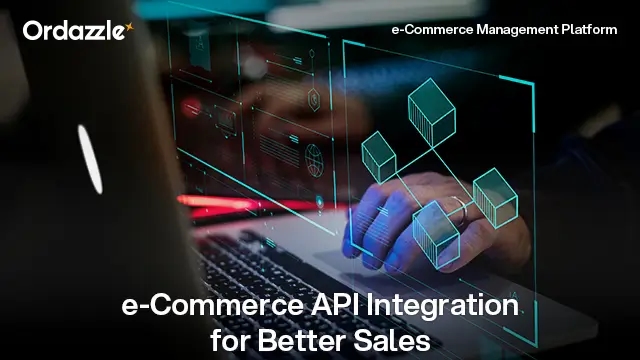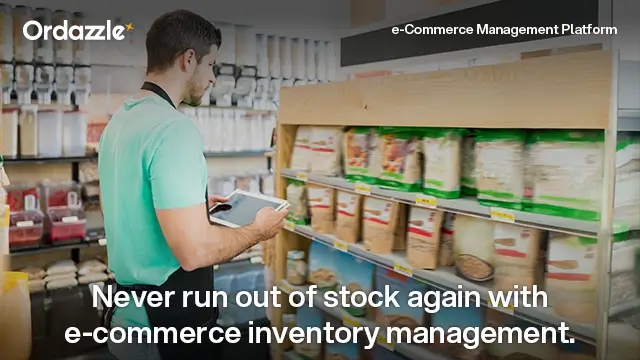API Integration in e-Commerce: Boost Your Sales with Seamless Automation

In today’s e-commerce ecosystem, growth depends on how efficiently your systems communicate. From storefronts and warehouses to ERPs and logistics partners, every layer of the retail supply chain generates critical data that drives fulfillment and customer experience. Yet, when these systems function in isolation, businesses struggle with data duplication, order delays, and rising operational costs.
API integration in e-Commerce solves this challenge by enabling seamless connectivity between all business platforms. It forms the backbone of modern retail, creating a unified flow of information that powers automation, transparency, and scalability.
Over the past decade, API-led commerce has evolved into an operational necessity for retailers worldwide. In this blog, we will explore how API integration in e-Commerce drives sales and operational excellence; what business owners should evaluate when selecting the best e-Commerce API; how API management tools support scaling; real-world case studies; and a practical roadmap to success.
What is API Integration in e-Commerce?
Simply put, API integration in e-Commerce connects disparate business systems, such as inventory management, order fulfilment, accounting, and CRM, so they can exchange information in real time.
When an order is placed online, APIs can automatically update stock levels, trigger warehouse fulfillment, and notify the shipping carrier without any manual intervention. This seamless data exchange eliminates errors, speeds up operations, and enhances customer satisfaction.
According to Statista (2025), more than 80% of global online retailers now use integrated APIs to run their digital operations efficiently. The adoption curve reflects one truth: in modern retail, connectivity is as important as product quality.
A unified platform like Ordazzle brings this to life by providing an eCommerce API integration layer that connects storefronts, ERPs, 3PLs, and marketplaces, ensuring a single, accurate source of truth across all business systems.
Why API integration in e-Commerce Matters for Modern Business Owners
Fragmented operations can impact everything from order accuracy to delivery timelines. By leveraging eCommerce API, businesses gain:
- Real-time synchronisation: APIs ensure every sale, return, and stock update reflects instantly across channels, preventing overselling and stockouts.
- Operational automation: Integrated workflows reduce manual data entry and reconciliation, cutting human error and processing time.
- Scalability and flexibility: Modular APIs enable businesses to onboard new marketplaces, payment partners, or logistics providers rapidly.
- Enhanced customer experience: Unified systems mean customers receive accurate product, inventory, and order-tracking information, boosting confidence and repeat purchases.
A ResearchGate (2024) study on ERP <-> e-Commerce connectivity found that organizations implementing real-time API integration in e-Commerce achieved a 30% reduction in order delays and a 20% improvement in inventory accuracy.
With an API-driven approach, Ordazzle allows retailers to operate with similar precision, aligning fulfillment, logistics, and channel data through a centralized integration hub.
Choosing the Best e-Commerce API
Selecting the best e-Commerce API is about more than performance; it’s about future-proofing. When evaluating APIs or an e-Commerce solution provider, businesses must look for solutions that balance scalability, flexibility, and governance.
Comprehensive coverage: APIs should enable full-spectrum operations, from catalogue management and order routing to payments and fulfilment.
- Developer-friendly design: Well-documented APIs with sandbox environments ensure faster, smoother integration.
- Performance and reliability: The API must handle high transaction volumes and seasonal spikes with minimal latency.
- Security and compliance: Authentication, encryption, and adherence to data-protection laws are non-negotiable.
- Extensibility: As business models evolve, APIs should easily connect with new marketplaces, logistics providers, and partner systems.
Modern e-Commerce leaders are shifting towards API-first ecosystems to enhance adaptability. The best e-Commerce APIs embody this principle, providing a flexible and scalable framework that ensures end-to-end control of data exchange across sales, inventory, fulfilment, and analytics systems.
Scaling Operations with API Management Tools
As integration networks expand, managing multiple APIs becomes complex. That’s where API management tools play a pivotal role, governing traffic, ensuring reliability, and maintaining security.
Robust management frameworks enable:
- Centralised monitoring: Track performance metrics, latency, and error logs in real time.
- Access control: Assign granular permissions and authentication protocols to partners and internal users.
- Lifecycle management: Introduce new API versions without disrupting dependent systems.
- Analytics and optimization: Evaluate usage trends to improve stability and response time.
- Scalability: Handle peak-season spikes without compromising service quality.
According to TekRevol, enterprises using API-management frameworks report 40% higher uptime and 50% faster troubleshooting cycles.
Ordazzle’s built-in API management tools provide these advantages natively, allowing retailers to configure, monitor, and optimize integrations from a unified dashboard, without relying on external middleware.

Real-World Scenarios: The Power of Unified APIs
API-led architecture isn’t just a technical upgrade; it is an operational transformation. Here are three industry scenarios reflecting how unified integrations deliver measurable business impact:
1. Faster Order Processing
With multiple channels feeding orders simultaneously, businesses often struggle with delayed fulfillment. Integrated APIs enable order data to flow directly from storefronts to warehouse and logistics systems.
Result: Faster order processing and improved dispatch accuracy.
2. Improved Inventory Accuracy
Disparate systems often cause over-selling or under-stocking. By consolidating all inventory feeds through eCommerce API integration, retailers maintain consistent visibility across all platforms.
Result: Improvement in inventory accuracy and lower cancellation rates.
3. Reduced Fulfillment Time
API-based integration between e-commerce and shipping platforms automates label creation, customs documentation, and delivery updates.
Result: Reduction in average delivery times, especially across multi-market operations.
e-Commerce platforms like Ordazzle help merchants replicate these results by offering pre-configured connectors that automate cross-channel operations and synchronise fulfillment cycles without custom code or complex setup.
Roadmap for Successful eCommerce API Integration
An effective API integration roadmap ensures long-term scalability and ROI:
- Define Objectives: Determine what automation should achieve - faster fulfilment, improved visibility, or global scalability.
- Audit Your Tech Stack: List all systems (ERP, WMS, OMS, CRM) and note integration gaps.
- Map Data Flows: Identify how information moves across systems.
- Choose Compatible APIs: Select the best e-Commerce API by looking for ones supporting modular architecture and open frameworks.
- Select Reliable Partners: Choose an experienced e-Commerce solution provider.
- Implement in Phases: Begin with high-impact areas like orders and inventory before expanding to CRM, analytics, and logistics.
- Leverage API Management Tools: Deploy for security, monitoring, and performance analytics.
- Measure and Optimise: Use analytics to refine integrations and improve uptime.
- Scale Globally: Extend integrations across new geographies, marketplaces, and delivery partners.
Frequently Asked Questions
1. What are the best e-Commerce APIs for seamless integration?
The best APIs are those that connect key functions like product catalogues, orders, payments, inventory, and fulfillment. Open, REST-based APIs are preferred for their flexibility and interoperability. Unified solutions like Ordazzle combine these capabilities within one integration layer for simplified management.
2. What should you look for when choosing an e-Commerce solution provider?
Look for scalability, transparent documentation, and strong integration support. A capable provider should enable rapid deployment and compatibility with ERPs, CRMs, and logistics systems. Ordazzle’s eCommerce API integration delivers all these capabilities through a centralized platform designed for both enterprise and mid-market retailers.
3. How do API management tools help with scaling operations?
They govern authentication, monitor performance, and control traffic, ensuring that integrations remain stable even as transaction volumes increase. Ordazzle’s native management console provides these controls, allowing retailers to scale confidently and securely.
4. Why is API in e-Commerce essential for growth?
APIs connect all operational systems, enabling automation, real-time analytics, and a unified customer view. They help reduce costs, minimize delays, and improve decision-making. With scalable APIs, businesses can enter new markets and manage higher order volumes effortlessly, a capability Ordazzle provides through its unified architecture.
Ready to unify your retail operations? Book a demo streamline your integrations and accelerate growth.


